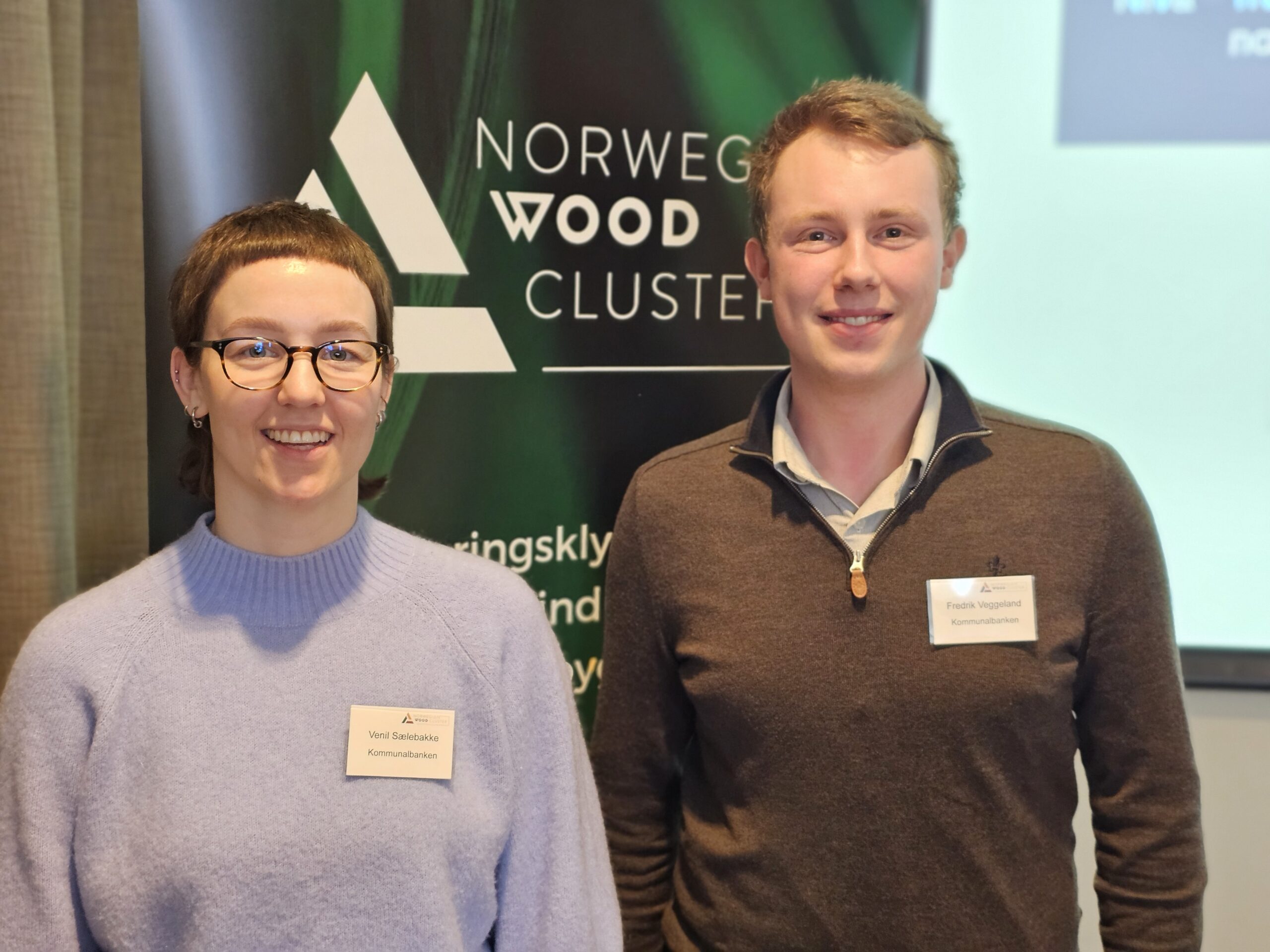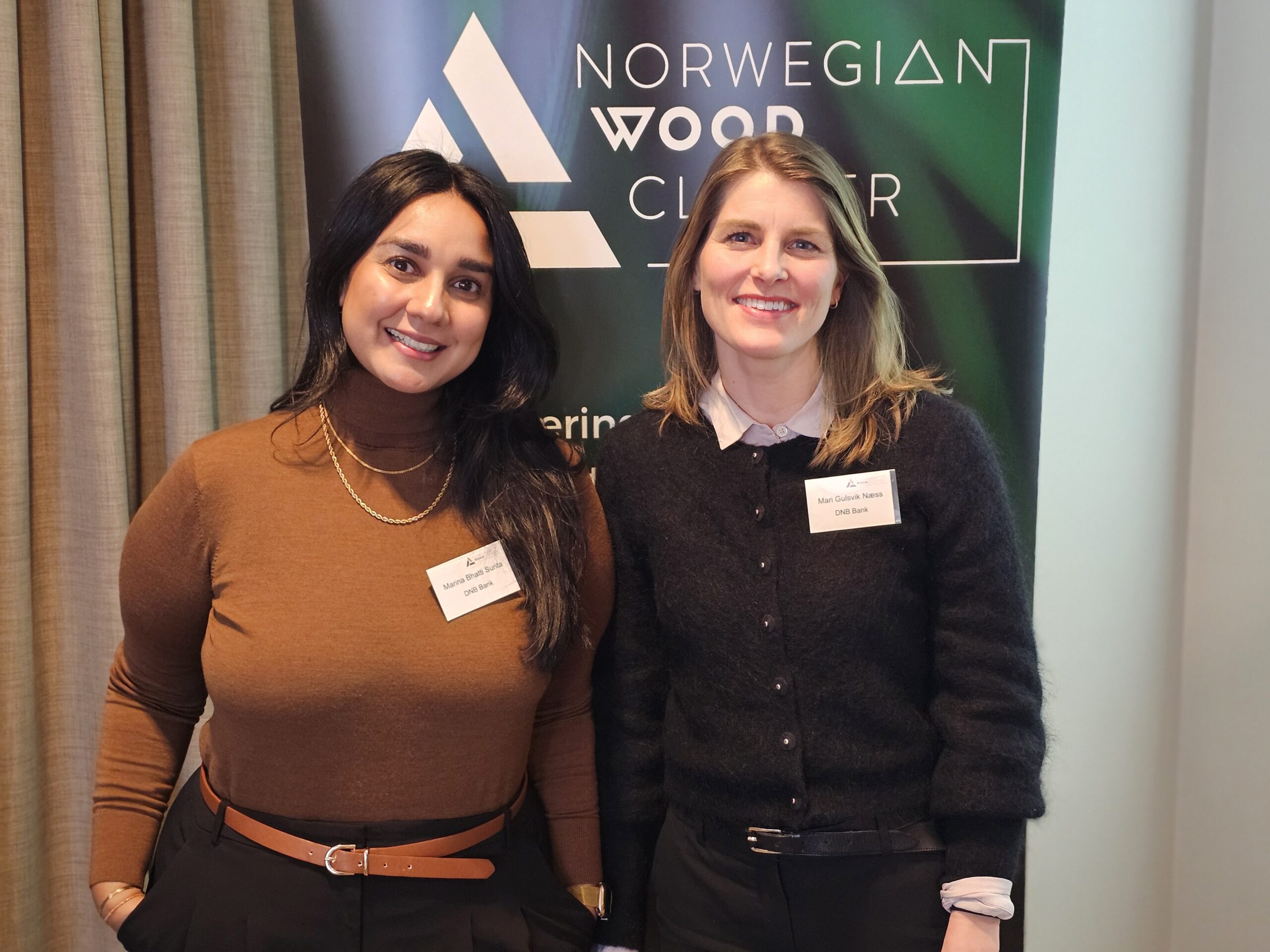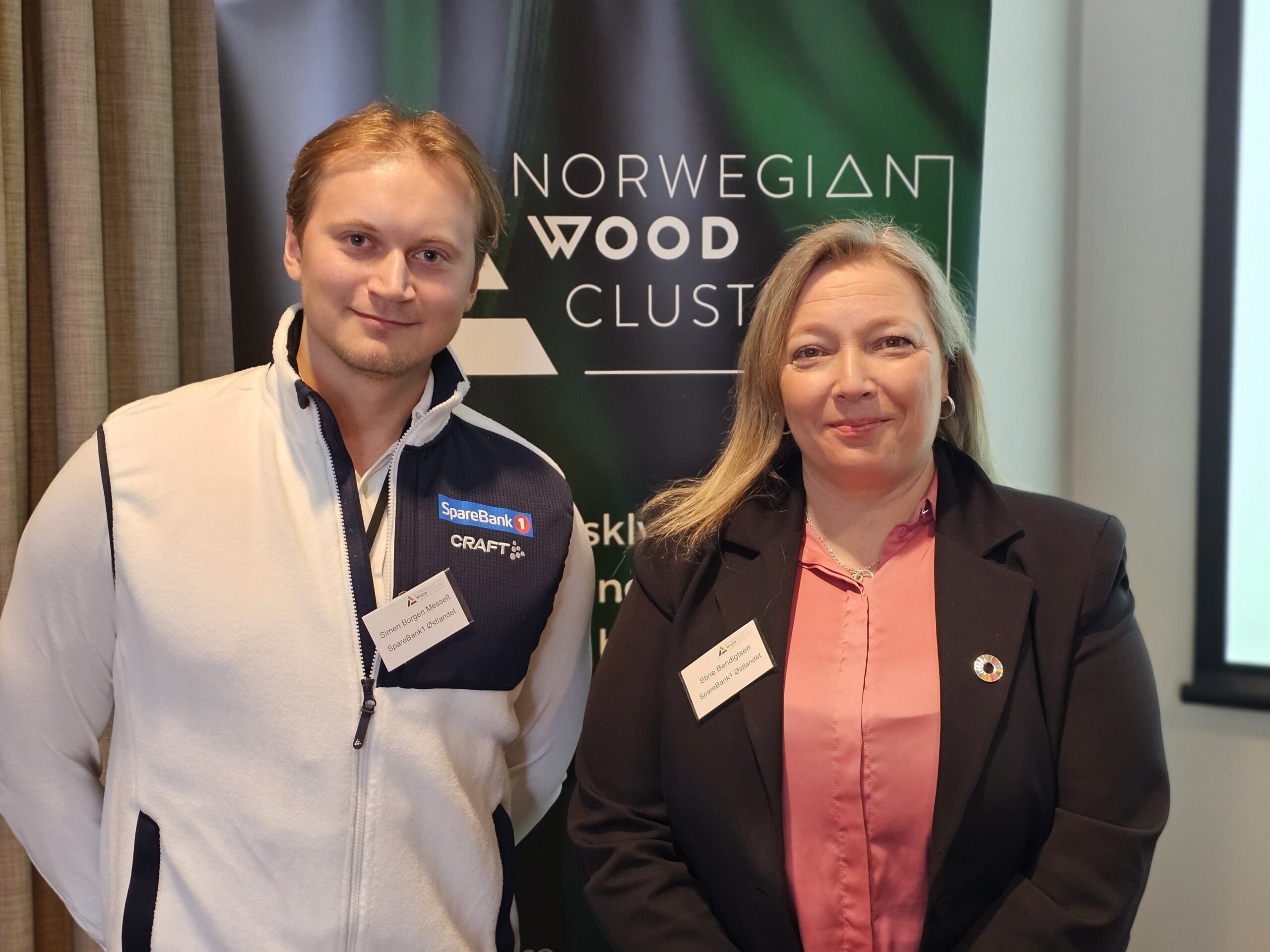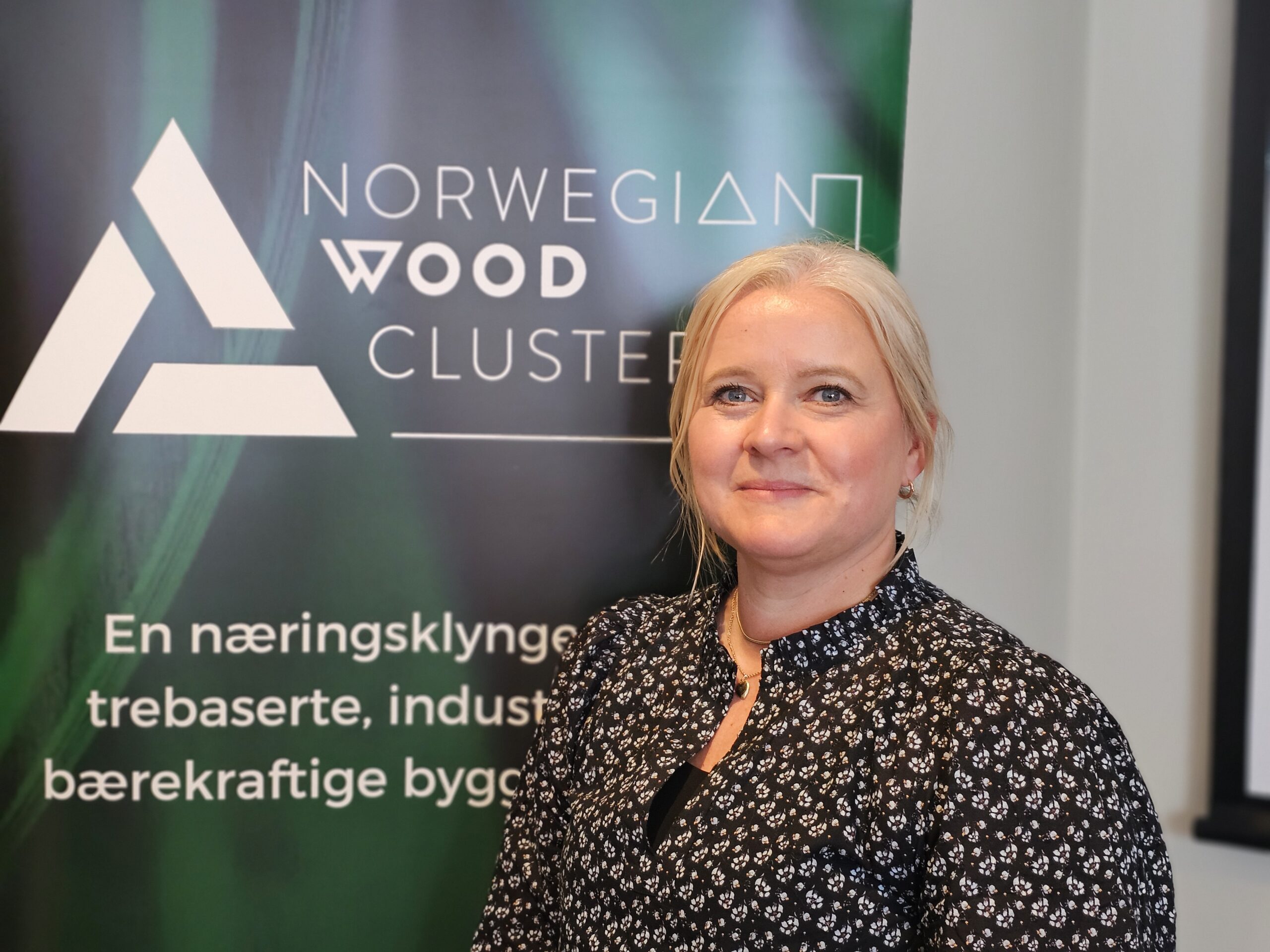The aim of the seminar was to provide insight into how the EU taxonomy affects the financial industry and, in particular, what products banks can offer within green loans.
– The overview from Finance Norway provided the right platform before Kommunalbanken, DNB Bank, SpareBank1 Østlandet and Innovation Norway contributed with their presentations. The banks’ presentations complemented each other well, so I think we got a lot of interesting insights through the seminar,” says cluster manager Berit Sanness of Norwegian Wood Cluster.
– In addition to the speakers delivering very interesting presentations, there was also good dialog with the participants. The feedback was also that the banks’ representatives found it useful to be updated on other banks’ work with the taxonomy and green loans, so we are pleased with that,” says Sanness.
The big picture
It’s essential for the forestry and timber industry to keep a close eye on what’s happening in the field of sustainable finance. It was therefore worth its weight in gold that Kristian Ruth, Director of Sustainability at Finance Norway, had made the trip to Mjøstårnet to give the status of sustainable finance and analyze where we are heading.
CEO Kristian Ruth gave a very good overview of the situation in the EU today and talked about expectations for the future. The legal requirements lead to a significant increase in reporting requirements and affect companies at different times depending on their size.
– Although there is a lot to get to grips with, the aim is that the EU taxonomy will simplify matters. As more companies are required to submit sustainability reports, we will have a basis for comparing companies. The taxonomy will set clear boundaries for what is sustainable and what is not. In this way, the framework of the EU taxonomy can help guide companies in the right direction,” Ruth explained.
In the coming years, a lot of sustainability information will be reported for the first time and the market’s response will be crucial.
– Our advice is that it is already wise to prepare for the coming reporting requirements regarding sustainable finance,” said Kristian Ruth.

Green in KBN from 2010
KBN is the largest lender to the local government sector and offers green loans for investments with a clear climate and environmental ambition. The taxonomy sets the framework for today’s work with green loans.
– KBN is not new to thinking about green loans. KBN made its first green loan offers back in 2010. In 2016, the first set of criteria was in place, and the criteria are constantly being developed,” said Fredrik Veggeland, Climate and Green Finance Advisor at KBN.
– KBN wants to be a driving force. “We were an early adopter of green loans, and we have also started preparations for taxonomy loans. Through a pilot project in Sandefjord, we are gaining useful experience of how the taxonomy can be implemented in practice. By 2024, we hope to have five new projects that can be included in a portfolio of taxonomy projects,” said Venil Sælebakke, Climate and Green Finance Advisor at KBN.




Banks’ offers of green loans etc.
DNB Bank and SpareBank1 Østlandet talked about their facilitation of green/sustainable bonds and green loans to companies.
DNB Bank said that sustainability-related loans have been used by several global companies in the forestry/forest industry with loans from the bank.
– The criteria for green loans for the forestry and timber industry include a 30% reduction in energy consumption and that the raw material is certified. For sustainability-related loans, the following KPIs (Key Performance Indicators) are relevant: greenhouse gas emissions, energy efficiency, pollution, waste, biodiversity, resource use, circular economy and health and safety, said Marina Bhatti Surita and Mari Gulsvik Næss, senior sustainability advisors at DNB Bank.
Agriculture and forestry account for 12% of SpareBank1 Østlandet’s corporate market portfolio. Sustainability has been on the agenda in the bank’s operations since 2008.
– “The bank has received very good feedback on corporate social responsibility and reporting. We therefore believe that we have taken a credible leadership position in sustainable banking,” said Stine Bendigtsen, Senior Sustainability Advisor at SpareBank1 Østlandet.
– One of the challenges with the taxonomy is that it relates to a carbon account of 30 years, while the typical cycle time in Norway is 80-90 years,” said Simen Borgen Messelt, Sustainability Advisor, SpareBank1 Østlandet.
Current financial instruments from Innovation Norway
Innovation Norway also has financial instruments that may be of interest for green financing.
– For our green financing scheme, we use the EU taxonomy as a framework to define whether a project is sustainable. Our environmental technology scheme may be of interest. We also support projects within the circular economy,” said Christina Seegaard, Head of Finance, Innovation Norway.
Green Growth Loan is aimed at companies that want to invest in climate-friendly solutions.
– The loan can be used to establish production of solutions that reduce greenhouse gas emissions. Co-financing with a bank is also relevant,” said Seegaard.
Part of project “Finance and sustainability”
The seminar on green loans is part of the project “Finance and Sustainability”, which the Norwegian Wood Cluster is currently conducting. The project “Finance and Sustainability” is part of the comprehensive Green Platform project “SirkTRE”, which is supported by Innovation Norway, the Research Council of Norway and SIVA. Read more about “SirkTRE” here: www.sirktre.no
The main objective of the project “Finance and sustainability” is to create increased insight into ongoing work within finance and sustainability with relevance to the forest and wood industry, both to meet documentation requirements and to exploit opportunities. This applies in particular to the consequences of the EU taxonomy. The need for sustainability reporting is central. Reuse, material recovery and recycling are among the many topics the company must consider when preparing its own sustainability report.
